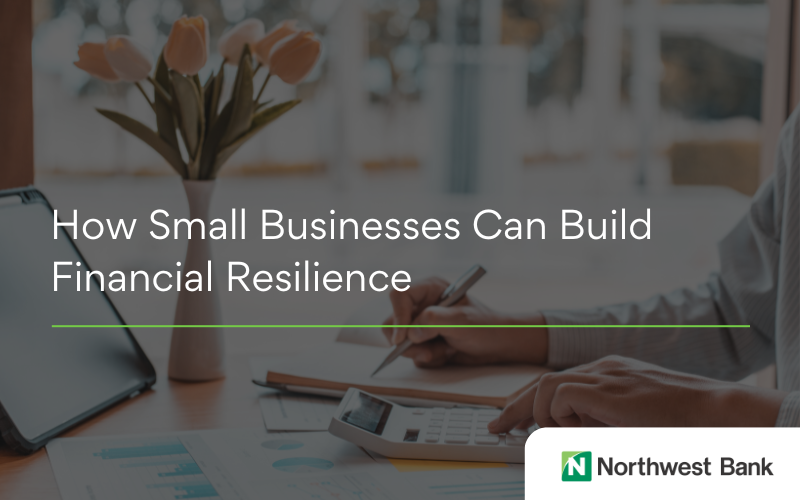How Small Businesses Can Build Financial Resilience
6 best practices to help ensure your business is ready for anything.
Key takeaways:
- Small businesses today face uncertainty on multiple fronts, from waning customer demand to increasing supply prices.
- In these conditions, shoring up access to capital while managing costs can help businesses succeed.
- However, entrepreneurs have an opportunity to think strategically — and they can leverage forecasting and contingency planning to forge a path to success.
Between regulatory shifts, dynamic trade policies and the fluctuating stock market, the only constant for today’s small businesses is uncertainty. Thriving in uncertain times relies on being ready for anything because there’s almost no way to tell what could happen tomorrow — much less next month.
However, small businesses have one significant advantage in a dynamic market: Agility. “Larger organizations may have more capital on hand, but small business owners have determination and grit — and they’re able to move swiftly to adapt to market trends,” says Kara Sciarra, Executive Director of Small Business Banking for Northwest Bank. So, while the current economic situation may feel challenging, it’s also an opportunity to go back to your entrepreneurial roots to help your business thrive.
And we’re here to help you every step of the way. Read on to learn six strategies that will help you build financial resilience and how we can support you on your journey.
1. Build a cash buffer to help you weather leaner times
Cash is king for any business — and that’s especially true in uncertain times. The simplest way to build resilience is to ensure you have cash on hand to manage an emergency.
A business emergency fund can serve as a source of capital, but you can also seek out financing to access cash. “Even if you don’t need capital right now, having a line of credit and a small business credit card can serve as a safeguard if you need capital later,” Sciarra explains. “It’s better to have resources available before you need them, so you don’t need to worry about applying when you’re already in a cash crunch.”
2. Find opportunities to streamline operations
As businesses brace for rising supply prices under the threat of tariffs, entrepreneurs are looking for ways to optimize efficiencies and manage costs.
But there’s another crucial resource you need to conserve: Your time. “When you’re facing uncertainty, you need excellent time management to respond to ongoing situations while running your business. You simply don’t have time for inconvenience,” says Sciarra.
When it comes to streamlined financial management, that means finding a “one-stop shop” that allows you to manage your finances — including your bank accounts, credit cards and lending solutions, and even payment processing — all in one place.
“Keeping everything together means you don’t have to go from website to website to manage your finances. And some banks even offer integration between your third-party vendor solutions and your online banking,” explains Sciarra. “That makes it easier for you to manage multiple aspects of your finances.”
3. Double down on forecasting
In an era where your strategy might shift dramatically week to week, it might feel like forecasting is a waste of time. But nothing could be further from the truth.
“During shifting market conditions, forecasting is crucial to understand the impact the economic change might have on your business,” Sciarra says. “It lets you know what could be coming, giving you time to react.”
If you’re not sure how to get the data you need for forecasting, look to your merchant services solution for help. Some holistic merchant services solutions offer analytics and forecasting capabilities, so you can get the insights you need without crunching the numbers.
4. Create contingency plans on top of contingency plans
Another benefit of forecasting? It gives you time to make contingency plans. While you don’t necessarily need a plan for every single possible situation, forecasting should help you identify the most likely risks to your business so you can plan accordingly.
Talking to a trusted financial advisor can help. “We work closely with our clients through economic shifts, and we can help you identify sources of risk and the best ways to mitigate or respond to them,” Sciarra says. “We’re also here to bounce ideas off of: Sometimes all you need is a conversation with someone outside your business to come up with your next big move.”
5. Look for hidden growth opportunities
Challenging macroeconomic environments are tough on small businesses everywhere. But there’s a silver lining: When your competitors are struggling, you have more opportunities to stand out.
“It may seem counterintuitive, but turbulent times can be a great opportunity to move your business forward,” Sciarra says. “Your customers’ financial situations may be changing, which gives you new opportunities to provide value.”
To do that, Sciarra recommends stepping out of your comfort zone. You might familiarize yourself with new marketing channels, like social media platforms, or adopt new positioning strategies to address customers’ evolving needs.
6. Stay focused on the financial fundamentals
The financial basics — revenue, profitability, cash flow and so on — may not be flashy. But a strong grasp of these essentials helps you succeed in a difficult market. They also give you insights into the current financial strength of your business so you can react accordingly.
Weakening cash flow, in particular, can serve as a bellwether for difficult times ahead, Sciarra notes. “It’s often one of the first tip-offs that something needs to change, whether that’s renegotiating with suppliers for more favorable payment terms or assessing changes in customer demand.”
If you’re not confident in your cash flow management, don’t worry: Your business banker can help. “We can help you identify the factors impacting your cash flow, giving you an action plan to strengthen the financial resilience of your business,” she says.
We’re here to support your business through thick and thin
If you’re nervous about the strength of your business, you’re far from alone. But, many business owners are more resilient than they think. “Scrappiness, grit, thinking outside the box: These are the same attributes that got many entrepreneurs into business in the first place,” Sciarra says. “During difficult times, going back to your roots can help you find the best path forward.”
Our dedicated team of small business banking experts are here to help, whether you’re looking for practical tips to strengthen your cash flow, brainstorming new pricing strategies or looking for financing to help you weather the storm.
Ready to take the next step? Submit the form below and a member of our team will reach out to you soon.




